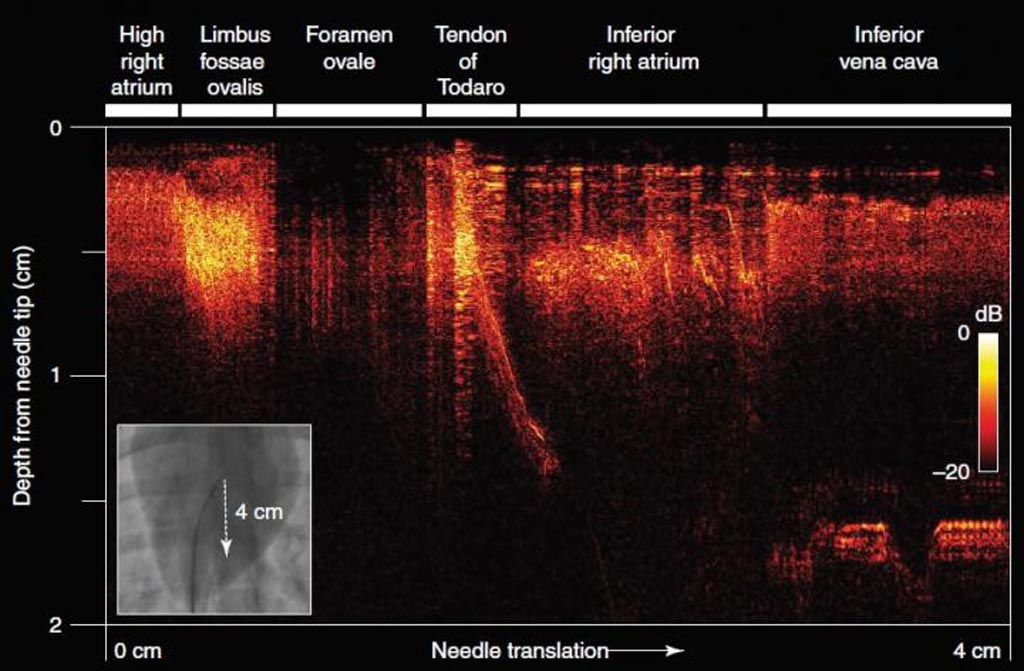Ultrasound Imaging Needle Transforms Cardiac Surgery
By MedImaging International staff writers
Posted on 21 Dec 2017
Innovative all-optical pulse-echo ultrasound imaging allows visualization of cardiac tissue in real-time during minimally invasive heart surgery.Posted on 21 Dec 2017
Developed by researchers at University College London (UCL; United Kingdom) and Queen Mary, University of London (QMUL; United Kingdom), the all-optical broad-bandwidth ultrasound needle is based on photoacoustic excitation of a nanotube-polydimethylsiloxane composite coating on the distal end of a 300-μm multi-mode optical fiber by a pulsed laser. Ultrasound interrogation is via a high-finesse Fabry–Pérot cavity on an optical fiber, using a wavelength-tunable continuous-wave laser. The transducer is integrated within a custom inner trans-septal needle that included a metallic septum in order to acoustically isolate the two optical fibers.

Image: All-optical ultrasound imaging acquired during the manual translation of the needle tip across a distance of four cm (Photo courtesy of Finlay et al).
In an experimental swine model, the needle provided real-time views of cardiac tissue at depths of up to 2.5 centimeters, with an axial resolution of 64 μm, successfully revealing the anatomical structures required to safely perform trans-septal crossing, including the right and left atrial walls, the right atrial appendage, and the limbus fossae ovalis. The researchers added that as the technology is compatible with magnetic resonance imaging (MRI), it may also be used for brain or fetal surgery, or for guiding epidural needles. The study was published on December 1, 2017, in Light: Science & Applications.
“We now have real-time imaging that allows us to differentiate between tissues at a remarkable depth, helping to guide the highest risk moments of these procedures,” said lead author consultant cardiologist Malcolm Finlay, MD, of QMUL. “The optical ultrasound needle is perfect for procedures where there is a small tissue target that is hard to see during keyhole surgery using current methods, and missing it could have disastrous consequences.”
“This is the first demonstration of all-optical ultrasound imaging in a clinically realistic environment. Using inexpensive optical fibers, we have been able to achieve high resolution imaging using needle tips under one millimeter,” said co-lead study author Adrien Desjardins, MD, of UCL. “We now hope to replicate this success across a number of other clinical applications where minimally invasive surgical techniques are being used.”
Related Links:
University College London
Queen Mary, University of London














